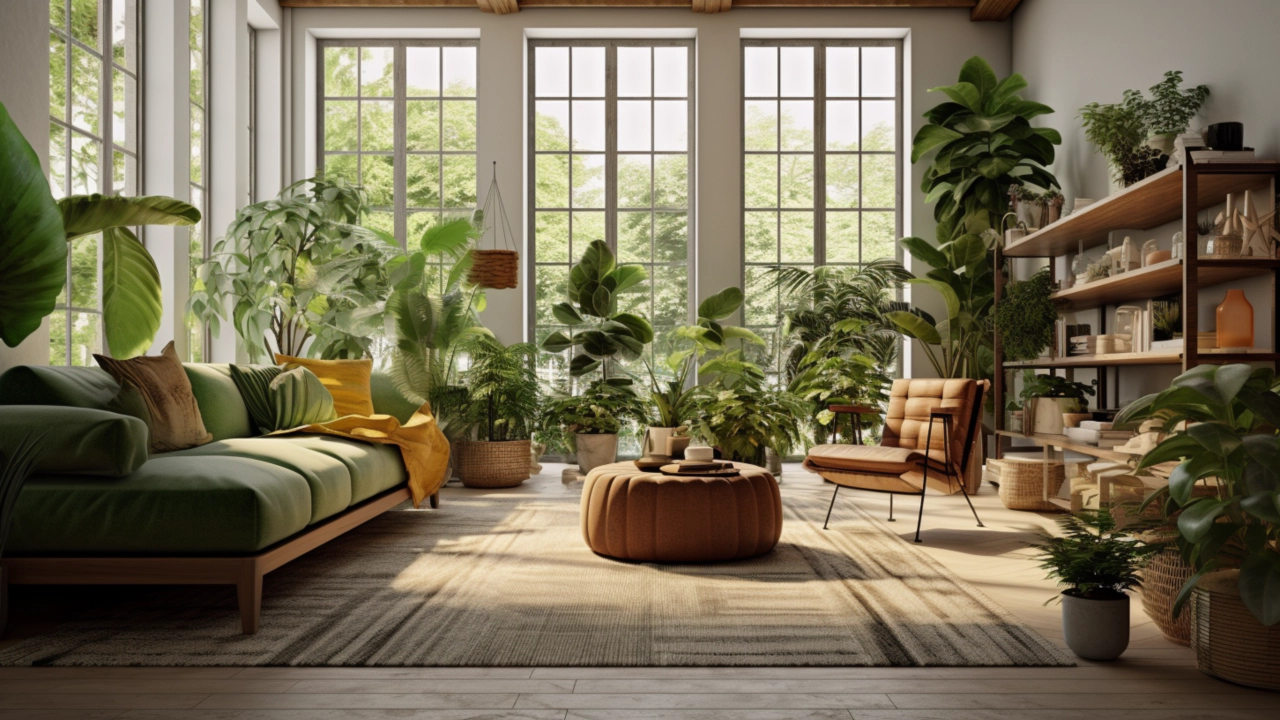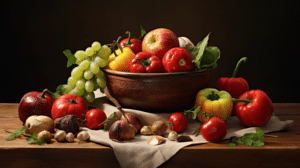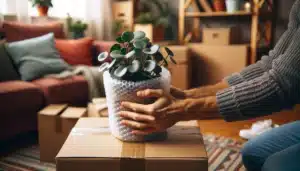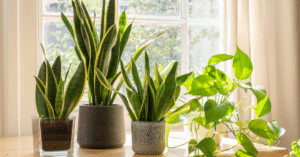Are you ready to transform your indoor space into a lush oasis of greenery and tranquility with expert indoor plant care? Look no further! In this article, we will guide you through the fundamentals of caring for your indoor plants. From selecting the ideal soil to ensuring the perfect balance of water and light, we’ve got you covered. Whether you’re an experienced plant parent or embarking on your indoor plant care journey, you’ll discover all the essential tips and tricks to keep your indoor plants flourishing. Let’s dive in and cultivate a thriving indoor garden together!
Key Takeaways
- Understand the specific needs of each plant, including the right amount of water, light, and nutrients.
- Use a soil-less growing media for indoor plants, such as equal parts of peat moss, vermiculite/perlite, and compost.
- Avoid overwatering by testing the weight of the plant and watering thoroughly but infrequently.
- Provide the appropriate amount of light based on the specific light requirements of each plant.
Understanding General Plant Care
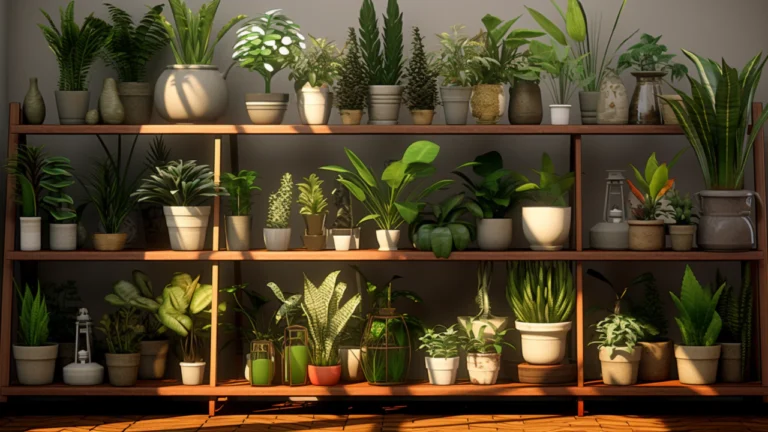
To properly care for your indoor plants, you need to understand the general principles of plant care. Indoor plants, also known as house plants, require specific attention to ensure their health and vitality.
Two crucial aspects of plant care are watering and light exposure. Proper watering is essential for indoor plants as it provides them with the necessary moisture to thrive. However, it’s crucial to avoid overwatering, as it can lead to root rot and other issues. To determine when to water your indoor plants, check the moisture level of the soil by inserting your finger about an inch deep. If the soil feels dry, it’s time to water.
On the other hand, light exposure is equally important for indoor plants. Different plants have varying light requirements, so it’s essential to find the right spot for each plant in your home. Some plants thrive in bright, indirect light, while others can tolerate lower light conditions.
Soil and Repotting Essentials
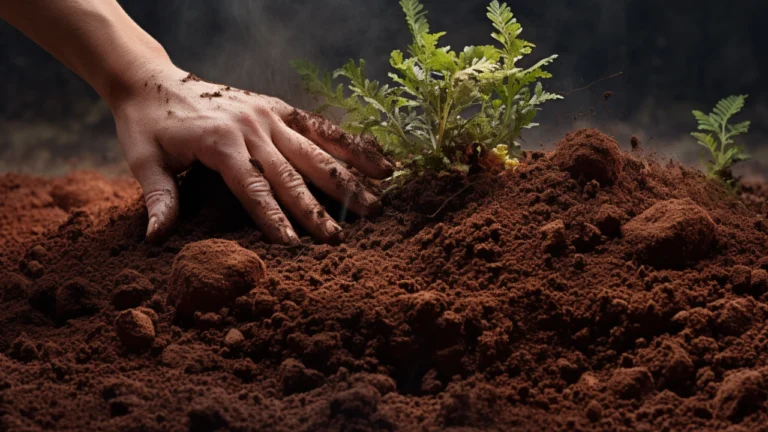
Mastering the fundamentals of soil selection and repotting techniques is key to nurturing your indoor plants effectively. Soil plays a crucial role in providing the necessary nutrients and support for plant growth. When selecting a potting mix, opt for a soil-less growing media that consists of equal parts peat moss, vermiculite or perlite, and compost.
This mixture provides good aeration and moisture retention, promoting healthy root development. For orchids, choose a well-drained potting mix specifically formulated for these delicate plants. Espoma all-purpose potting mix is a popular choice for a variety of indoor plants.
When repotting, you’ll need to choose the right potting mix and ensure proper drainage for your plants. Make sure the new pot has drainage holes to prevent waterlogged soil and root rot. Fill the pot with fresh soil, leaving enough space for the roots to grow. If your pot doesn’t have drainage holes, consider using a grow pot inside the decorative planter to control drainage.
Understanding the soil and repotting essentials is crucial for successful indoor plant care. By providing fresh soil and ensuring proper drainage, you’ll create a healthy environment for your plants to thrive. Remember to choose the right potting mix and pot size, and don’t forget to repot every 12 to 18 months to accommodate your plants’ growth.
To properly care for your indoor plants, it’s important to understand that different plants have unique soil requirements. While a general soil-less growing media consisting of equal parts peat moss, vermiculite or perlite, and compost is a good start, some plants may require more specific soil types.
For instance, cacti and succulents thrive in a well-draining mix with more sand or gravel, whereas orchids need a special orchid mix that allows for better air circulation around the roots. Regularly check if your plants are becoming root-bound and repot accordingly using the right soil mix for their specific needs.
Watering and Humidity Management

In managing humidity for your indoor plants, consider the specific needs of each species. Tropical plants, such as Boston ferns and peace lilies, flourish in high humidity environments and may benefit from frequent misting or a humidifier nearby.
On the other hand, plants like cacti and succulents prefer drier conditions. Grouping plants with similar humidity requirements can create a beneficial microclimate, making it easier to maintain the right atmosphere for your greens.
Proper watering and humidity management are essential for the health and well-being of your indoor plants. It is crucial to establish a watering schedule that meets the specific needs of each plant. Overwatering can lead to soggy soil, which can suffocate the roots and cause root rot.
On the other hand, underwatering can lead to dry and wilted plants. To avoid these issues, it is important to check the soil moisture before watering. Stick your finger about 2 inches deep into the soil, and if it feels dry, then it’s time to water.
In addition to proper watering, humidity management is also important for indoor plants. Most indoor plants prefer higher humidity levels, especially those that originate from tropical climates. You can increase humidity by using a tray filled with water and placing the plant on top, or by misting the leaves with water.
Grouping plants together can also create a more humid microclimate. However, it is important to note that not all plants require high humidity. Cacti and succulents, for example, prefer drier air.
To help you keep track of your watering and humidity management, here is a handy table:
| Indoor Plant | Watering Schedule | Humidity Level |
| Fern | Keep soil consistently moist | High humidity |
| Succulent | Allow soil to dry out completely between waterings | Low humidity |
| Orchid | Water thoroughly when potting mix feels dry | Moderate humidity |
| Snake Plant | Water sparingly, allowing the soil to dry out between waterings | Low humidity |
| Spider Plant | Water when the top inch of soil feels dry | Moderate humidity |
Light Requirements for Indoor Plant Care
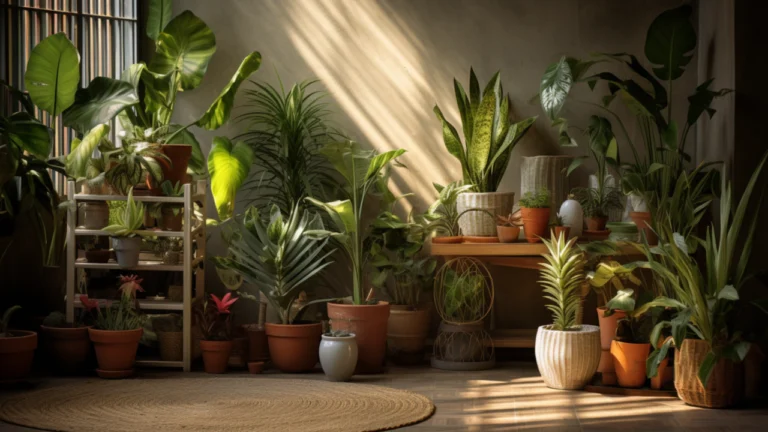
Determine the amount of natural light your space receives to meet the specific light requirements of your indoor plants. Light is essential for the growth and survival of plants, and different houseplants have varying light requirements.
To assess the light conditions in your space, observe the direction your windows face and take into account any obstructions to sunlight outside your window. Most houseplants prefer bright, indirect sunlight, while some can tolerate lower light levels. Avoid placing plants in rooms with zero windows and dim artificial lighting.
Bright light refers to direct sunlight, which is ideal for plants that require high light levels. Low light conditions, on the other hand, indicate a lack of direct sunlight and are suitable for plants that can thrive in shade. Indirect light refers to light that’s filtered or diffused, such as light that passes through a sheer curtain or bounces off a wall.
Filtered light refers to light that’s partially blocked or shaded, such as light that passes through a tree canopy or a frosted window. Moderate light is a balance between bright and low light and is suitable for plants that can tolerate a range of light levels.
Understanding these terms and assessing the light conditions in your space will help you choose the right plants and provide them with the appropriate amount of light. Remember that insufficient light can hinder new growth, while too much direct sunlight can cause sunburn and yellowing of leaves. By meeting the specific light requirements of your indoor plants, you’ll create an environment that promotes healthy growth and overall plant success.
Fertilizing and Care Tips
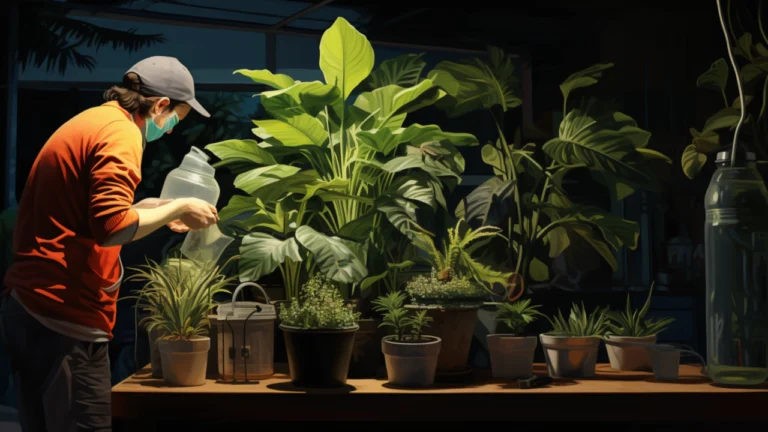
Maintaining proper fertilization and maintenance is crucial for the health and growth of your indoor plants. Here are some fertilizing and maintenance tips to keep your plants thriving:
• Fertilize regularly:
Indoor plants require additional nutrients to support their growth. Use either granular or water-soluble fertilizers to provide the necessary nutrients. Apply granules every few months and water-soluble fertilizers every two weeks during the growing season. Consider using trusted brands like J R Peters Jacks Classic or Osmocote Plus.
• Proper watering:
Water your plants in moderation to avoid overwatering or underwatering. Most houseplants prefer slightly dry soil, so check the moisture level before watering. Use the weight of the pot as an indicator – if it feels light, it’s time to water. Water thoroughly but infrequently, and remember to use a tray to catch excess water.
• Adequate light:
Light is essential for plant growth and photosynthesis. Different plants have varying light requirements, so provide either direct or indirect light based on their needs. Insufficient light can hinder new growth, while too much direct sunlight can lead to sunburn. Understand the specific light needs of each plant to ensure optimal growth.
When fertilizing your indoor plants, it’s crucial to adjust the feeding to the plant’s growth cycle. During the active growing seasons of spring and summer, most plants benefit from regular fertilization, but in the dormant winter months, they require less or no fertilizer. Tailor your fertilization schedule to the specific needs of each plant. For example, flowering plants may require a fertilizer with a higher phosphorus content to encourage blooms.
Conclusion
In conclusion, understanding the fundamentals of indoor plant care is crucial for creating a thriving indoor garden. Did you know that indoor plants can improve air quality by removing toxins and releasing oxygen? By providing the right amount of water, light, and nutrients, as well as maintaining proper humidity levels, you can ensure the health and vitality of your plants. So go ahead and enhance your indoor space with beautiful greenery, knowing that you’re also benefiting your overall well-being.
Frequently Asked Questions
How often should I water my indoor plants?
Houseplants have varying requirements for watering. Factors such as the type of plant, the size of the pot, and the humidity levels in your home should be considered. Generally, it's important to check the soil moisture before watering to avoid overwatering.
Do indoor plants need fertilizer?
Yes, indoor plants benefit from fertilizer to replenish nutrients in their potting soil. Using a balanced plant food according to the care guide for your specific type of plant can help your plants thrive.
How can I ensure proper sunlight for my indoor plants?
Providing direct sunlight is essential for many indoor plants, but some tropical plants may require indirect light. Understanding the plants that need sunlight and positioning them accordingly can help keep your indoor plants healthy.
What are some common pests for indoor plants and how can I handle them?
Houseplant pests such as pests can be a concern. Regularly checking your plants and using natural methods or pest control products specifically formulated for indoor plants can help keep your plants healthy.
When should I repot my indoor plants?
Observing whether the plants are root-bound, showing signs of root rot, or experiencing slow growth can indicate the need for repotting. Providing proper drainage hole and fresh potting soil upon repotting can help them grow.
Sources
https://www.almanac.com/gardening/growing-guides
https://royalsociety.org/topics-policy/projects/soil-structure-and-its-benefits/
https://www.bhg.com/gardening/houseplants/care/watering-houseplants/
https://extension.umn.edu/planting-and-growing-guides/lighting-indoor-plants
https://www.thesill.com/blog/why-plants-need-humidity
https://www.almanac.com/gardening/growing-guides
https://www.ncbi.nlm.nih.gov/pmc/articles/PMC3230460/

